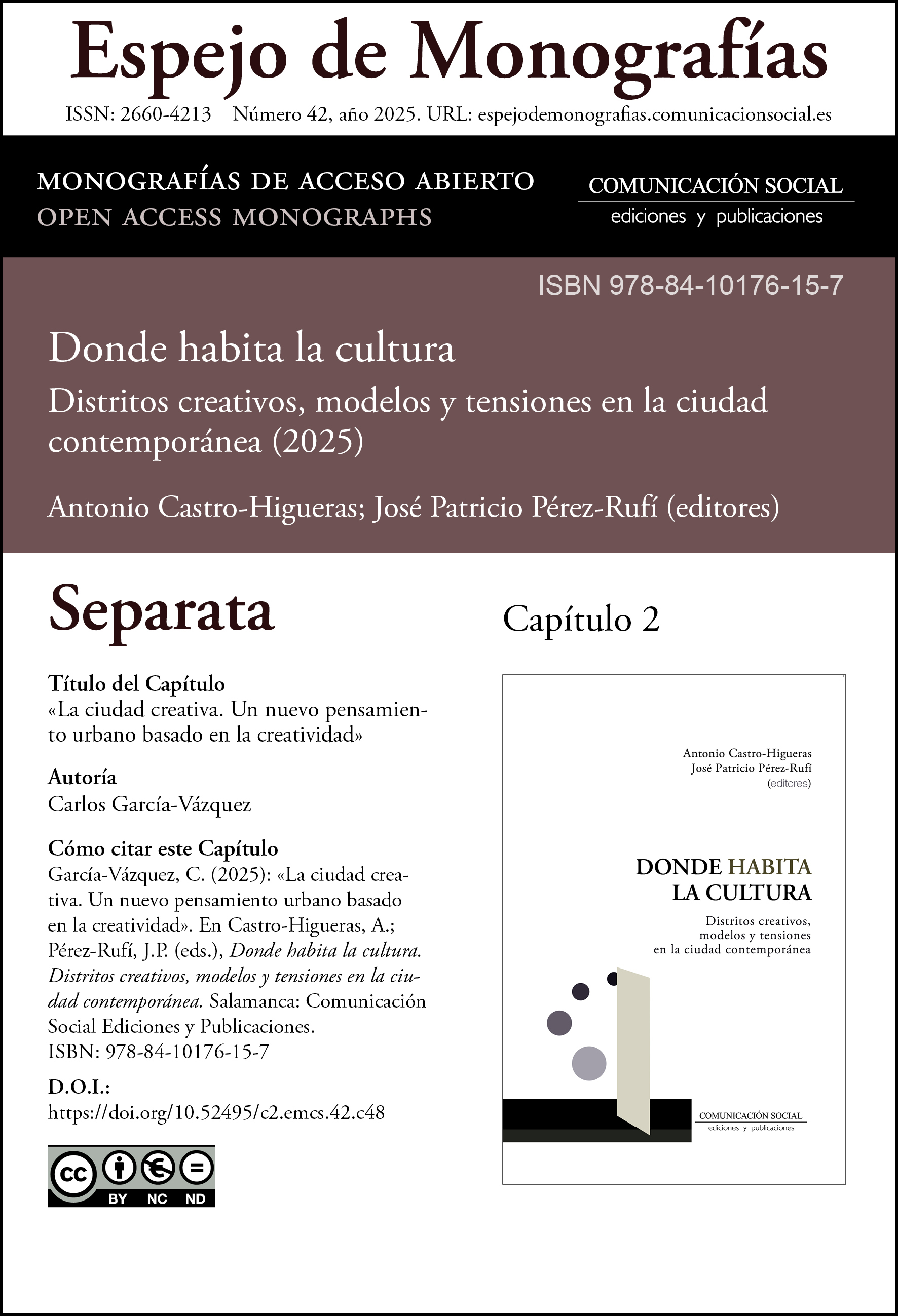Capítulo 2. La ciudad creativa. Un nuevo pensamiento urbano basado en la creatividad
DOI:
https://doi.org/10.52495/c2.emcs.42.c48Palabras clave:
Ciudad creativa, clase creativa, infraestructuras blandas, creative city, creative cluster, creative milieu, creative class, soft infrastructures.Resumen
Este capítulo aborda la cuestión de la creatividad desde el punto de vista del urbanismo y la arquitectura. En una primera parte, se introducen los conceptos de «industria creativa», «clase creativa», «creative milieu» y «ciudad creativa». Este último se planteó como una estrategia para recuperar la economía de ciudades golpeadas por la desindustrialización, especialmente, ciudades de tamaño pequeño e intermedio. Tras analizar los requisitos que ha de cumplir toda ciudad creativa, el texto se centra en el del espacio urbano creativo, que se define como un «creative milieu» donde convergen infraestructuras duras y blandas. En una segunda parte, el capítulo se adentra en el análisis específico de los espacios urbanos creativos (diferenciando entre espacios públicos, lugares de encuentro y barrios históricos), así como de los creative milieus (clusters culturales, de investigación y producción, de eventos y residenciales). Finalmente, el texto apunta el gran potencial creativo que ofrecen los espacios productivos obsoletos, especialmente las zonas posindustriales y los frentes marítimos.
Abstract
This chapter addresses the issue of creativity from the perspective of urban planning and architecture. The first part of it introduces the concepts of «creative industry», «creative class», «creative milieu», and «creative city». The latter was proposed as a strategy to recover the economies of cities hit by deindustrialization, especially small and medium-sized cities. After analyzing the requirements that every creative city must meet, the text focuses on creative urban space, which is defined as a «creative milieu» where hard and soft infrastructures converge. In the second part, the chapter delves into a specific analysis of creative urban spaces (differentiating between public spaces, meeting places, and historic neighborhoods), as well as creative milieus (cultural, research and production, event, and residential clusters). Finally, the text highlights the great creative potential offered by obsolete productive spaces, especially post-industrial zones and waterfronts.
Descargas
Citas
Carta, Maurizio (2007): Creative City: Dynamics, Innovations, Actions, Barcelona: LISt.
Florida, Richard (2002): The Rise of the Creative Class: and How It’s Transforming Work, Leisure, Community and Everyday Life, Nueva York: Basic Books.
Howkins, John (2001): The Creative Economy: How People Make Money from Ideas, Penguin Global.
Landry, Charles (1995): The Creative City: A Toolkit for Urban Innovators, Nueva York-Londres: Routledge.

Publicado
Cómo citar
Número
Sección
Licencia

Esta obra está bajo una licencia internacional Creative Commons Atribución-NoComercial 4.0.
Los artículos publicados en la revista se distribuyen con la Licencia Creative Commons Atribución-NoComercial-SinDerivadas 4.0 Internacional










